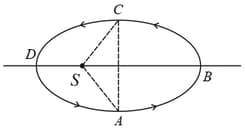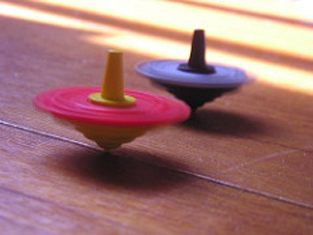EASY
Earn 100
The planets move around the sun in fixed track known as
50% studentsanswered this correctly
Important Questions on Our Earth
MEDIUM

MEDIUM
MEDIUM
EASY
EASY
MEDIUM
EASY

Identify the movement of the planets which causes day and night.
EASY
MEDIUM
EASY
Fill in the blank with a suitable word:
When we can see more than half the moon, then it is called _____ (gibbous/full) moon.
MEDIUM
EASY

Observe the spinning top as shown in the image. Which movement of the Earth is represented by this top?
EASY
EASY
Name the following.
Three planets in the solar system.
EASY
MEDIUM
EASY
When the Moon is completely hidden, it is called _____ (partial lunar eclipse/total lunar eclipse).

